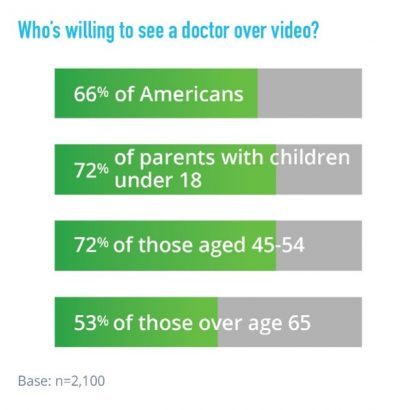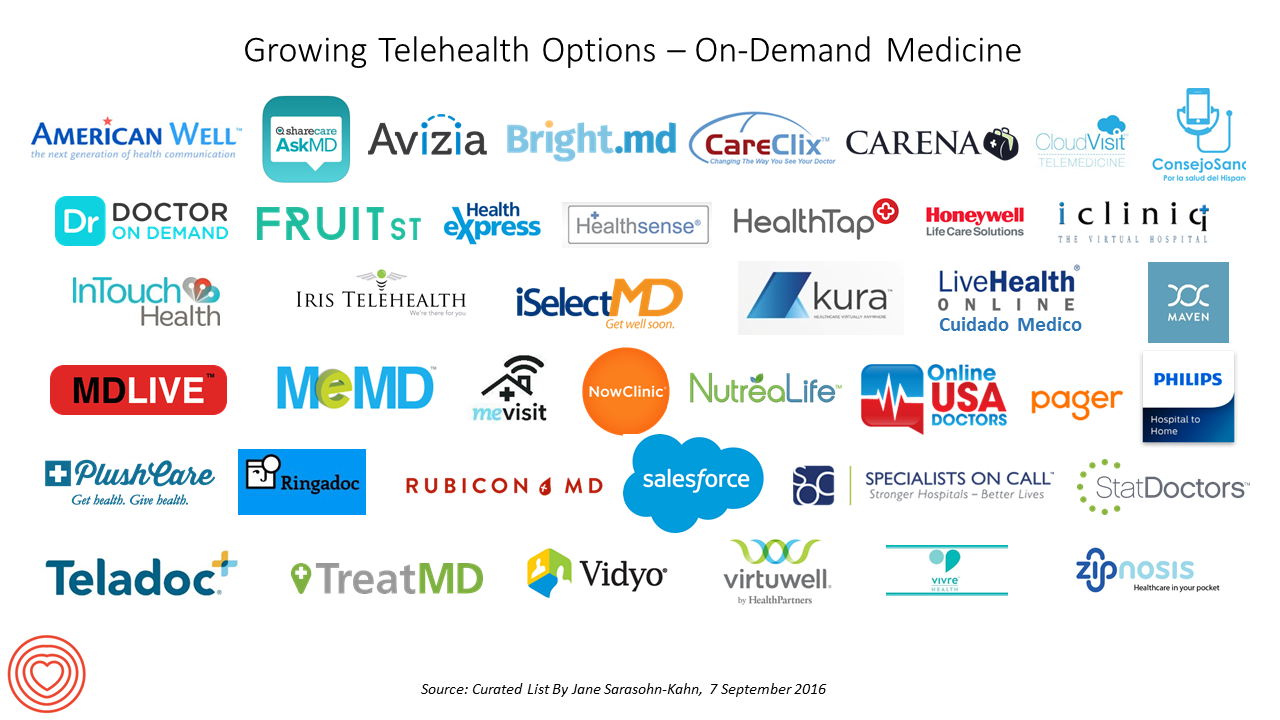 Two in three U.S. consumers are willing to see a doctor online. American health consumers welcome the opportunity to engage in virtual healthcare services via telehealth.
Two in three U.S. consumers are willing to see a doctor online. American health consumers welcome the opportunity to engage in virtual healthcare services via telehealth.
American Well’s 2017 Telehealth Index surveyed 2,100 U.S. adults 18 and over in August and September 2016 to gauge consumers’ views on healthcare services, access, and receptivity to virtual care modes of delivery.
Underneath the 66% of consumers open to telehealth are demographic differences: people with children are more likely to value virtual care, as well as people between 45 and 54, the survey found.
Note, though, that a majority of older Americans over 65 are also willing to see a doctor over video — which demonstrates that most aging Americans are open to new forms of digital healthcare delivery.
There’s a growing awareness of telehealth among consumers, a growing number of whom would be willing to switch doctors for access to virtual care. Fully one-third of parents with children would be willing to switch from their current primary care provider to another who offered video visits. Younger patients would be more interested in switching than older patients.
Other key findings of the study include:
- 60% of consumers willing to have online video visits with a doctor for managing chronic conditions, with a majority of people across all age groups willing to engage in virtual chronic condition management (including 59% of people over 65 years of age)
- Just over one-half of consumers would be interested in video visits for post-surgical or post-hospital discharge follow-up
- While consumers haven’t abandoned the ER for middle-of-the-night care, 20% of people are open to a video visit overnight]
Video visits to enable prescription refills are very popular across all age groups, and especially for people 45 and over; 82% of consumers 65 and over are keen on prescription refills virtually, the #1 demand for virtual care followed by chronic care management, hospital follow-up care, and birth control.

Health Populi’s Hot Points: American Well’s 2017 Telehealth Index reinforces what other recent consumer surveys have found: that patients, now health consumers, are welcoming virtual care. There are many reasons for this. As health consumers, people seek access, convenience, value-for-money (owing to first-dollar coverage required by high-deductible health plans and HSAs), all enabled through transparency of availability (think: Google-map style information), quality (think: Yelp!) and price (think: Amazon).
Another study released this week from Blue Cross Blue Shield Association provides more evidence on the expanding retail health landscape in America. BCBS found that retail clinic visits have increased over the past five years, doubling among commercially insured BCBS members. Another study, from West Monroe Partners, found that 8 in 10 consumers preferred mobile communications with clinicians to an office visit. Their top-line summary was found in the title of their report: “No more waiting room: the future of the healthcare customer experience.”
The second graphic illustrates the growing array of telehealth options in the U.S. as of late 2016. That’s the supply side, including and beyond American Well, that’s responding to the demand side of consumers-as-payors, and employer-payors whose interest in telehealth has dramatically expanded in the past two years of health plan design. The limiting factor on the supply side has been clinicians, who, with hospitals, are faced with a growing cadre of patients seeking convenient care. Some have begun to adapt to consumers’ retail health pressures. Those who do not risk irrelevance, even among aging patients who have begun to embrace digital health.




 Thank you, Jared Johnson, for including me on the list of the
Thank you, Jared Johnson, for including me on the list of the  I am so grateful to Tom Lawry for asking me to pen the foreword for his book, Health Care Nation,
I am so grateful to Tom Lawry for asking me to pen the foreword for his book, Health Care Nation,  Thanks to Feedspot for naming this blog, Health Populi, as a
Thanks to Feedspot for naming this blog, Health Populi, as a